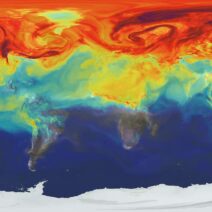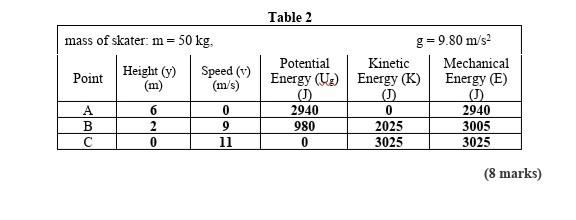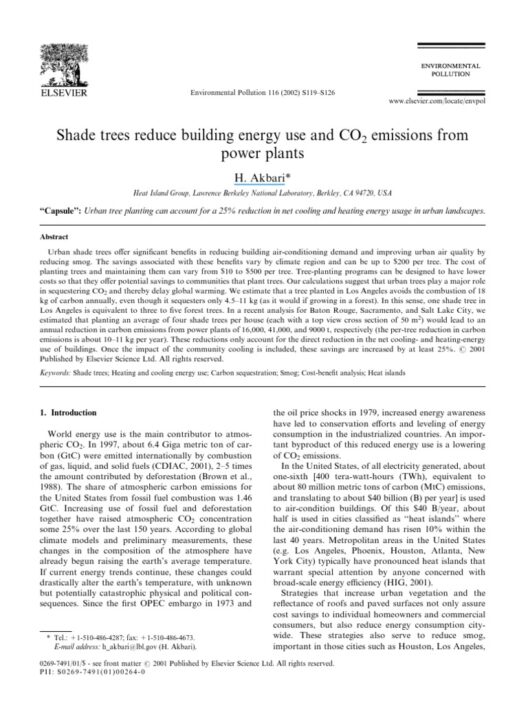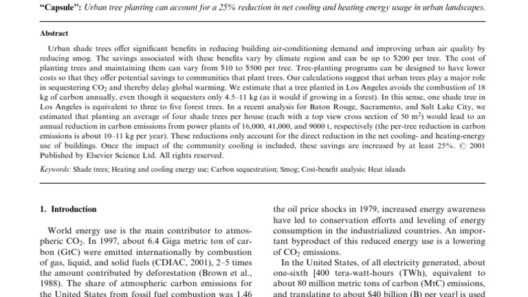When considering the complexities of mechanical energy, one common observation emerges: when objects break apart, there is often a noticeable shift in perceived energy. This observation stirs a fundamental question in physics: Is mechanical energy conserved during the process? To address this inquiry, we must delve into a detailed examination of both mechanical energy and the conditions under which systems experience fragmentation.
Mechanical energy, in its essence, is the sum of kinetic energy (the energy of motion) and potential energy (the energy stored due to an object’s position or configuration). According to the Law of Conservation of Energy, energy in a closed system must remain constant; it cannot be created or destroyed, only transformed from one form to another. This principle serves as the bedrock of classical mechanics and provides a lens through which we can examine the behavior of systems undergoing abrupt changes, such as disintegration or collision.
The phenomenological observation of energy transformation becomes particularly pronounced in scenarios involving explosive fragmentation. For example, when a projectile explodes mid-air, the pieces scatter in various directions, and at first glance, it might seem as though the mechanical energy has been lost – dissipated into the void. However, upon careful analysis, it becomes evident that the kinetic energy of the fragments far exceeds the initial kinetic energy of the projectile alone, suggesting a transfer or conversion of energy occurred rather than a loss.
When an object breaks apart, the mechanism at play often involves the conversion of stored potential energy into kinetic energy. For instance, a compressed spring in a mechanical toy possesses elastic potential energy. When the toy is released, it uncoils, and the spring discharges its stored energy, propelling various components into motion. In this instance, momentum is conserved, which aligns with Newton’s Third Law of Motion; the spring’s stored energy is virtually transformed into kinetic energy as the toy breaks apart.
An essential consideration is the role of external forces during fragmentation. In systems where objects break apart due to external influence – say, a hammer impacting glass – energy dynamics become convoluted. The hammer applies force, transferring energy into the glass. As the glass shatters, some energy is converted to sound and heat, leading to a significant practical outcome: although mechanical energy appears to be altered or ‘lost,’ it has simply been redistributed into different energy forms. Here, we see energy conservation at play; it manifests, albeit in less straightforward ways.
Moreover, the concept of energy dissipation plays a critical role in understanding fragmentation. Energy dissipation occurs through mechanisms such as heat, sound, and internal friction when materials yield to stress and strain. In a catastrophic failure, such as a bridge collapsing, mechanical energy is transformed into various forms, causing a notable effect on the environment surrounding the event. These dissipative processes underscore the complexity of energy conservation; although the initial mechanical energy may not remain as cohesive kinetic or potential energy post-fracture, it is not eradicated from the system.
Curiously, this exploration of conservation principle leads us to deeper reflections on energy as it relates to our environment. When considering ecological impacts of energy transformations – for example, in the context of waste materials generated by destructively engineered systems – we must recognize that energy is not merely an abstract notion. Each time mechanical energy is converted and dissipated, there are real-world implications, particularly regarding sustainability and resource management.
This notion of fragmentation can be likened to natural phenomena. Consider the disintegration of minerals and rocks, which, over millennia, undergoes a process of fragmentation, giving rise to soil. Here the mechanical energy derived from weathering is not lost but rather transformed and utilized in a completely different ecological system. The breakdown facilitates nutrient cycling, showcasing an example where nature embodies energy transitions, harmonizing with the principles of conservation.
As we analyze the principles surrounding energy conservation in fragmentation, several intriguing facets and nuances emerge. The observation of mechanical energy conservation, or lack thereof, during object disintegration prompts further inquiry into the complex nature of energy systems. It challenges our perceptions, demonstrating that while energy in one form may appear transformed or dissipated, it ultimately serves the broader spectrum of energy conservation across a multitude of interactions.
In conclusion, the question of whether mechanical energy is conserved when objects break apart cannot be answered with a simple ‘yes’ or ‘no.’ It is instead a tapestry of interactions that reveal the transformational prowess of energy. From compressed springs to the shattering of glass, and the natural processes of weathering, mechanical energy undergoes a metamorphosis – a continuum where conservation of energy remains a salient principle. This exploration proffers insight into our interconnectedness with energy dynamics, influencing how we approach conservation efforts in our environment, underscoring a vital need for further understanding and appreciation of nature’s energetic processes.








